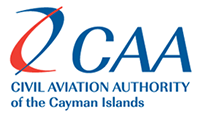Press Room
Direction to Restrict the Operation of Small Unmanned Aircraft in the Cayman Islands
Published Feburary 2016
The Civil Aviation Authority of the Cayman Islands, under the provisions contained in Articles 4 and 6 of the Air Navigation (Overseas Territories) Order 2013 [AN(OT)O 2013], has issued a Direction to restrict the use of small unmanned aircraft in the vicinity of Owen Roberts International Airport, Charles Kirkconnell International Airport and Edward Bodden Aerodrome to mitigate the risk of collision between manned and unmanned aircraft. In addition, the same Direction establishes a restricted zone around HM Prison Northward to improve the security of its perimeter. The Direction comes into force on 1st February 2016.
Small Unmanned Aircraft (SUA) or Small Unmanned Surveillance Aircraft (SUSA) are terms used in the AN(OT)O 2013 to describe what are more popularly known as Drones, UAVs, quadcopters and similar small unmanned aircraft. For the purposes of the proposed Direction “unmanned aircraft means any unmanned aircraft.
The effect of the Direction is that a three nautical mile zone will be established extending out from the perimeter of:
- Owen Roberts International Airport (Grand Cayman);
- Charles Kirkconnell International Airport (Cayman Brac);
- Little Cayman Aerodrome / Edward Bodden Airfield. (Little Cayman).
Within the established zones, as identified on the accompanying maps, no unmanned aircraft will be permitted to fly without a Permission issued by the Director-General of Civil Aviation and the specific consent of the appropriate air traffic control authority.
In addition, a one nautical mile zone, extending out from the perimeter of Northward Prison will be established to enhance the security of the facility. Within the established zone no SUA will be permitted to fly without a Permission issued by the Director-General of Civil Aviation and the Director of Prisons.
The need for these restrictions arises from the explosion in the international sales of unmanned aircraft generated by the advent of miniaturized technology, light-weight materials and cheap manufacturing processes which make them a very affordable commodity. They are purchased and operated as toys rather than aircraft, often without due regard to the possible consequences of flying them in the very confined environment of an island community reliant upon its aviation links for both survival and development.
Recent reports suggest that there has been a significant increase in the use of small unmanned aircraft, particularly in the vicinity of Owen Roberts International Airport, the hub of the Cayman Islands aviation industry. Consequently, the risk of an incident or accident caused by the impact of an SUA with a conventional aircraft or its ingestion by a jet engine increases proportionally.
Although there has yet to be an incident between an aircraft and a small unmanned aircraft in Cayman Islands airspace, there are an increasing number of reported incidents elsewhere, both in the US and Europe resulting in “near misses”. Rather than risk a potential incident, the Civil Aviation Authority of the Cayman Islands (CAACI) believes that, in the interest of safety and security, it is appropriate to issue this Direction.
Individuals who contravene the Direction issued by the Director-General are liable to prosecution. The power to enforce Directions is stipulated in Article 183 of the Order and the penalties for contravention in Article 185 of the Order.
CAACI Contact:
Director of Air Navigation Services Regulation, Alastair Robertson
